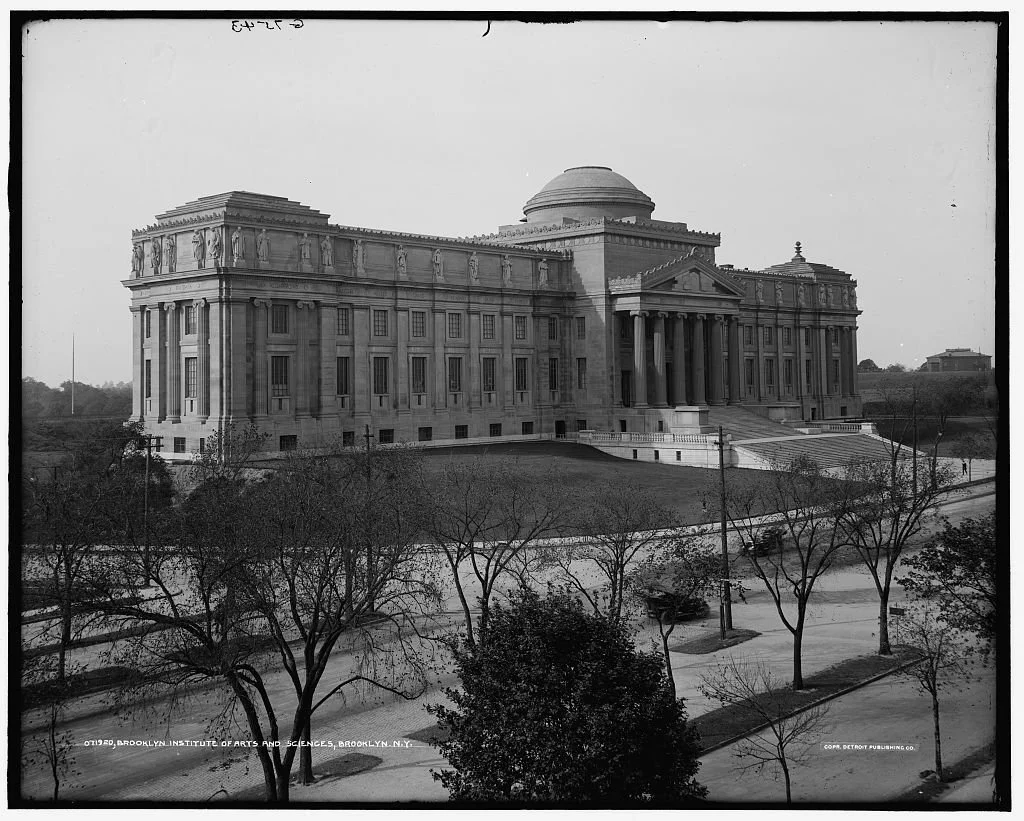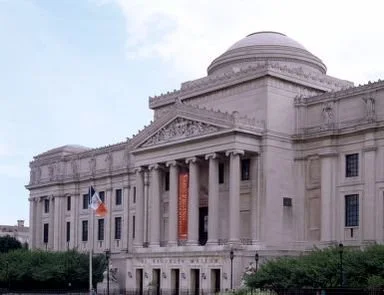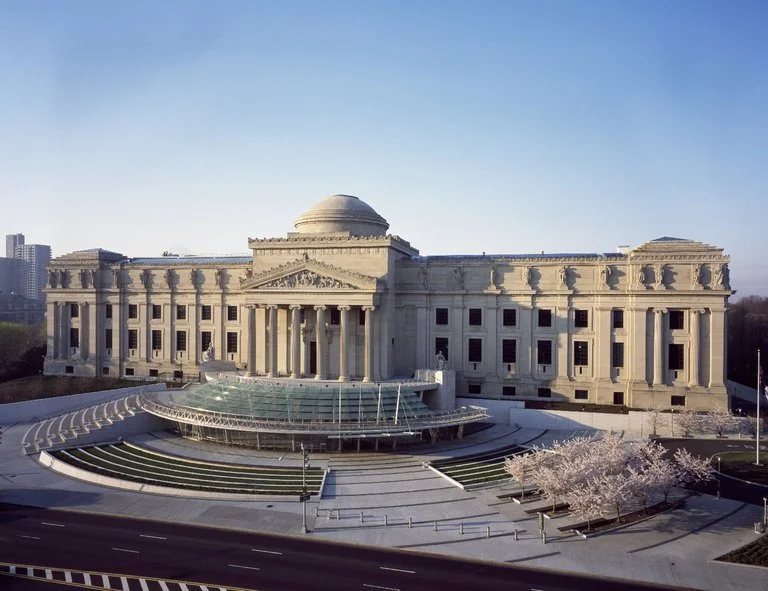Brooklyn Museum’s new entrance pavilion: Democracy Now?
My first memory of the Brooklyn Museum was that brutally truncated entrance. When I was 12 or so, my older sister had a boyfriend with a car. We would ride around Brooklyn in his Mustang and one day we drove up to the Brooklyn Museum. The Beaux Arts building was certainly awe-inspiring, but what were those forbidding stone walls that rose up out of the concrete sidewalk? Those high Ionic columns that started way up above your head and the statues that perched on blocks of granite as high as a house? Even with my limited experience, I knew something was wrong.
The Brooklyn Museum as it originally appeared. Photographed 1905 by Detroit Publishing Co.
Library of Congress digital ID: det 4a23706 //hdl.loc.gov/loc.pnp/det.4a23706
The Brooklyn Museum website explains that the original monumental steps of the McKim, Meade & White building had been removed in 1934. They were deteriorating badly after several decades of deferred maintenance, and the city decided at that time that a more “democratic” entrance would be appropriate. This democratic aesthetic dictated a disproportionately small entry door because it was felt that large, pompous entries were intimidating. (Fortunately, it was not a style that caught on much in the U.S., but one can still find public buildings handicapped with these tiny entrances in the former Soviet Union.)
The Brooklyn Museum after the shearing of the monumental stairs in 1934. This photograph was taken in 1980 by the photographer Carol M. Highsmith.
Photographs in the Carol M. Highsmith Archive, Library of Congress, Prints and Photographs Division.
Digital ID:
highsm 18036 //hdl.loc.gov/loc.pnp/highsm.18036
It was clear to many that the supposedly democratic entrance never looked quite right. In 2004 a new entrance pavilion was opened. Now the imbalances were rectified, the oddity erased – but by something just as odd. I was curious to see this modern glass and metal entrance after reading all the strong reactions (many of them quite negative) on internet blogs.
The 2004 entrance was designed by James Stewart Polshek. He made no attempt to recreate the original stairway or fake a classical entrance that might seem to blend in. Instead he took a bold approach, crafting a modern sweep of open glass that seems like a growth of cityscape that has attached itself to the building. It is smooth but broken up concentrically, like a digital hiccup or interference on a TV screen. The semicircle of greenish glass supported by metal masts rise up at an angle from the ground, in direct contrast to the rectangular classicism of the historic facade – but in doing so, they evoke the memory of the bulk and the striations of those original monumental steps.
Modern view of the museum, after 2004. This image, along with several others, is available for download on the Brooklyn Museum website.
This image, along with several others, is available for download on the Brooklyn Museum website.
From across the road the modern structure has the ghostly silhouette of a grand staircase, in some way reprising the dimensions of the original McKim, Meade & White design.
Inside the glass, one can see that the stone cladding of the lowest level of the structure has been removed, exposing the red brick of the foundation. It is as though the new entrance had not been tacked onto the building but had somehow grown into it, eating away at the base to establish itself there. What once seemed to me like forbidding blocks of stone rising perpendicular out of the sidewalk (the so-called “democratic” entrance!) have now had their vulnerability exposed, as though the museum were sympathetically laying its whole history bare for all to see.
Those large allegorical sculptures of Manhattan and Brooklyn, which had been added in 1964 when they were removed there from the Manhattan Bridge, now seemed to have come down to earth from their heights, riding just above the arcs of green glass, like two sisters sitting comfortably at some wavy Atlantic shore. And now mere mortal New Yorkers can keep them company, as a large segment of the pavilion roof is dressed with sloping steps that serve as seating for people-watching on a sunny afternoon. (Since 2016, the two allegorical sisters have returned to the Manhattan Bridge, in spirit anyway. Replica sculptures made from opaque resin that glow at night, have been installed on pillars on the Brooklyn side of the bridge. They revolve eerily. But I digress.)
Certainly there are some people who object to this new pavilion, calling it jarring and overdone, but many others with an opposite reaction, including the New York Times architecture critic, Herbert Muschamp who called it “one of the most attractive public spaces to be found anywhere in town.” To me it has just the right feel of confident innovation and reflection. The Brooklyn Museum has turned a misguided, clumsy doctrinaire attempt at democracy into an inviting, modern approach to the same goal that truly opens the museum to the city. This is democracy for the 21st Century.
For more images, look at:
https://www.architectural-holidays.com/venues/brooklyn-museum/
The Brooklyn Museum website:



